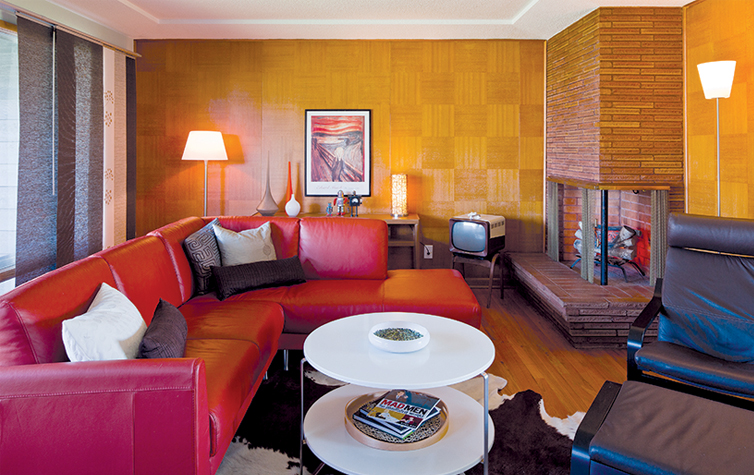
There once was a time when Oregonians drove three hours north to Seattle to shop at IKEA. There might have been stores in Abu Dhabi and Adelaide, but not in PDX. “When IKEA was opening in Portland, we were all excited,” says Eric Besore, a network administrator. “We even drove past the plot of land when we found out where they were going to build.”
Portland’s excitement was so great that the local news covered eager patrons camping out in anticipation of the doors opening, and traffic helicopters gave commuters workarounds to avoid the congestion. You’d have thought it was the release of a new Apple product or something.
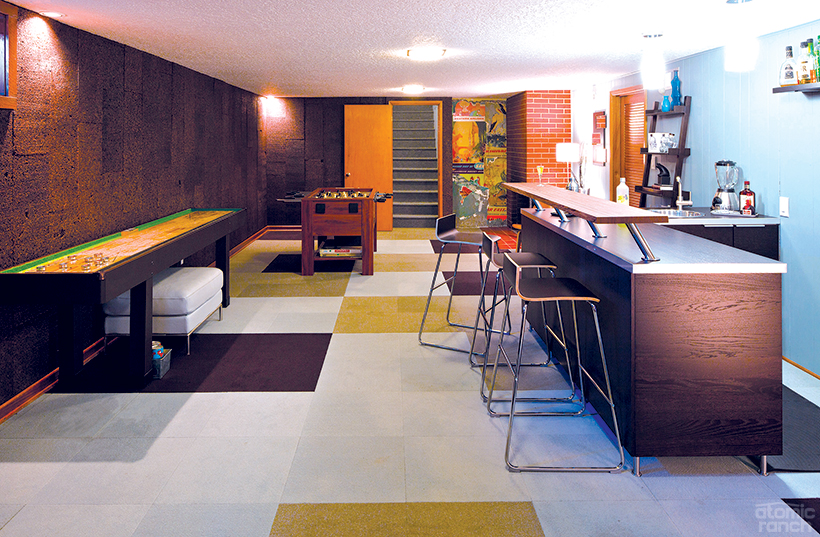

“Coming back from our honeymoon in 2006, we went through Seattle and stopped by IKEA to ask about hiring for the Portland store,” adds his wife, Noelle Gallant. With two decades of retail management experience, she really, really wanted to join the furniture company’s crew. So much so, she stalked their website daily waiting for hiring to go live. It worked, and today she’s an IKEA team leader.
The couple, both 40, have remodeled and furnished their 1958 traditional ranch in northeast Portland with dozens of IKEA furnishings and products—from the couches to the teapot to their kitchen cabinets and appliances. And because budget was key, Gallant became adept at ferreting out discounts from various other suppliers while splurging on the occasional must-have obsession. But first, Besore needed to be hauled onto the ranch bandwagon.
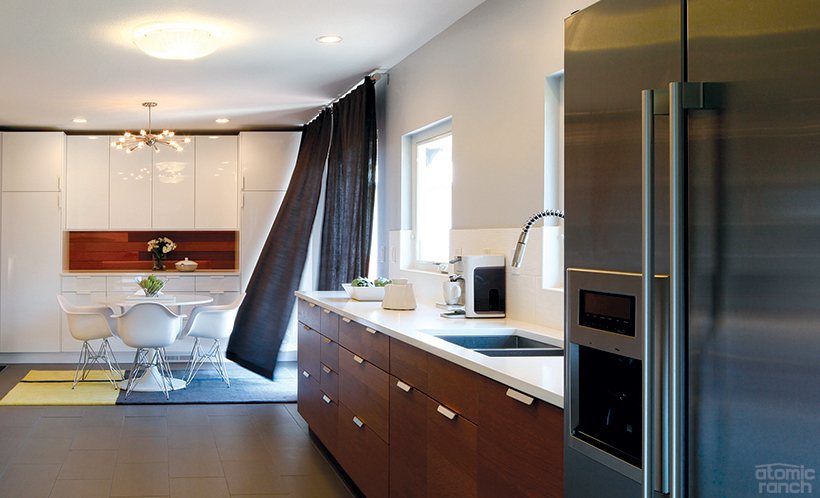
The couple’s previous home had sold and they were desperately combing through the RMLS for a bungalow or farmhouse. “When I saw a ranch online, I’d just go on to the next page,” Gallant explains. “But this one—the poster wall and the wood paneling, specifically—reminded me of my aunts’ and uncles’ cool ranches. We came to see it and Eric actually loved it.”
“I grew up in a sprawling, one-level, sunken-living-room, dark-wood-paneling, thick-shag-carpet, burnt-orange-and-avocado-kitchen ’70s ranch—very ‘Brady Bunch,’ in a bad way,” Besore says. “I love bowling, and I love the ’50s and ‘Mad Men,’ and I like the cars, but I never thought about a house [of that era].
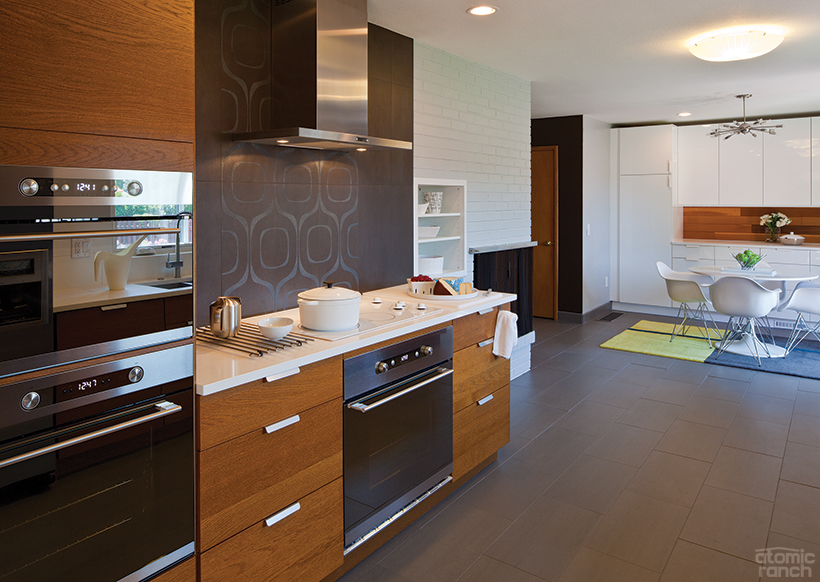
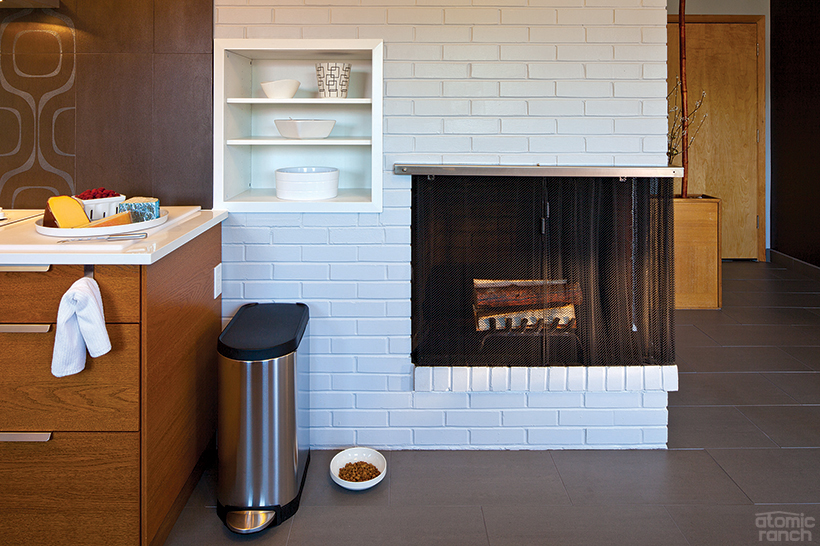
“I liked the look of the front of this house, but I have a hard time seeing past other people’s stuff. There was carpet and drapes and lighting fixtures that were bad, and the kitchen was all ’80s, but when we came down to the basement it was awesome. We wrote the preservation of the downstairs poster wall into our offer.”
That wall he mentions came courtesy of the longtime owner, a teacher who collected travel posters on trips and had permanently mounted them in the basement. The house was three times as large as their last place, and they liked the floor plan. An IKEA kitchen was already on their wish list, so the existing one with its paneled oak cabinets wasn’t a deterrent.
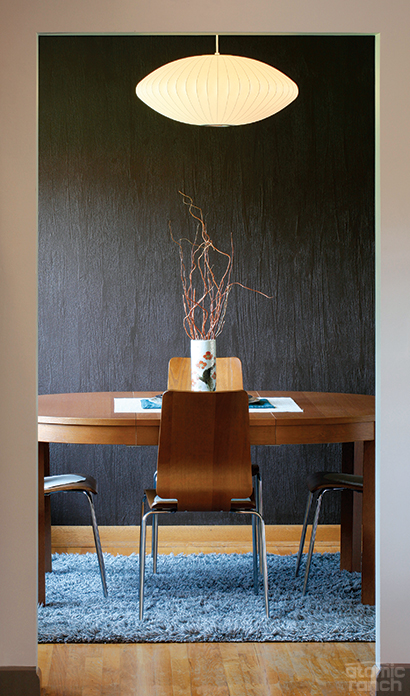
Tearing out carpeting to reveal the hardwoods, painting the nicotine beige interior and removing wallpaper on some of the textured walls were the first tasks. Although modernist friends advised them to paint the natural wood window and door trim, the couple resisted, feeling the contrasting moldings suited the style of home. Gallant developed a palette of Benjamin Moore paint colors after discovering that cheap paint was no bargain at any price.
Their kitchen remodel took about a year, some of that due to hiccups with the floor tile and electrical system. Gallant had just taken a kitchen planning class at work and knew the existing layout made no sense, yet they wanted to avoid moving plumbing to keep costs down. “I had information overload, so I asked some work friends to come and give their input,” she recalls. “One suggested moving a window over so a 36″ refrigerator would fit in the corner, and raising the second window from banquette- to counter-height to allow for a long run of countertop.”
“It was divide and conquer: if we paid to put in two new windows, we didn’t have to move the appliances and could work with the existing space,” Besore says. They compromised on the cabinets: he was drawn to the high-gloss white or gray Abstrakt models for their Tomorrowland/Monsanto-House-of-the-Future vibe, while she wanted wood. “I said I’m going to be cooking in a gray kitchen, looking out a gray window in gray Oregon weather; we need some warmth,” Gallant recounts.
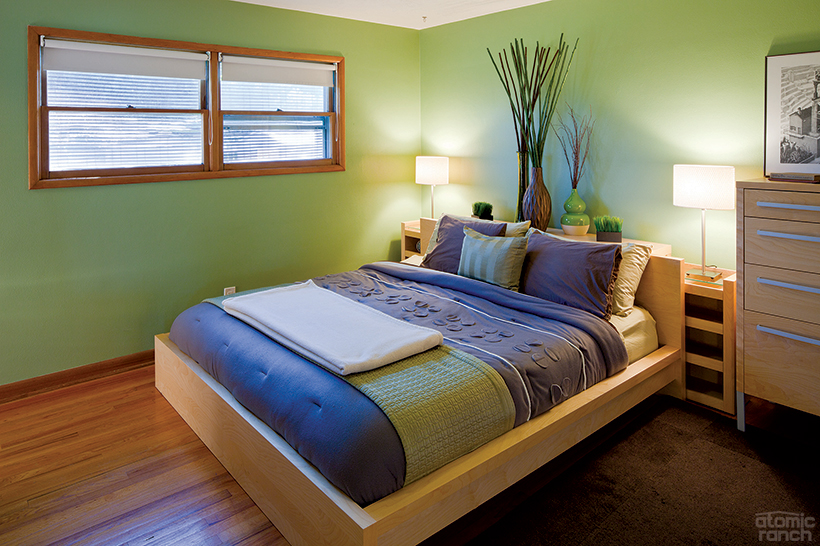
They used the basement as the staging area for prepping the quartz countertops and assembling the cabinets, then hired a contractor to level and install the trim panels. Just when the walls were The exterior is painted in Benjamin Moore Black Panther. ready to be buttoned up, they got the bad news that their 100-amp service wouldn’t suffice for the double ovens and other new appliances they’d chosen. Upgrading to 200 amps meant pulling a new line from the pole and relocating the outside meter— which they’d carefully worked around when selecting the kitchen windows.
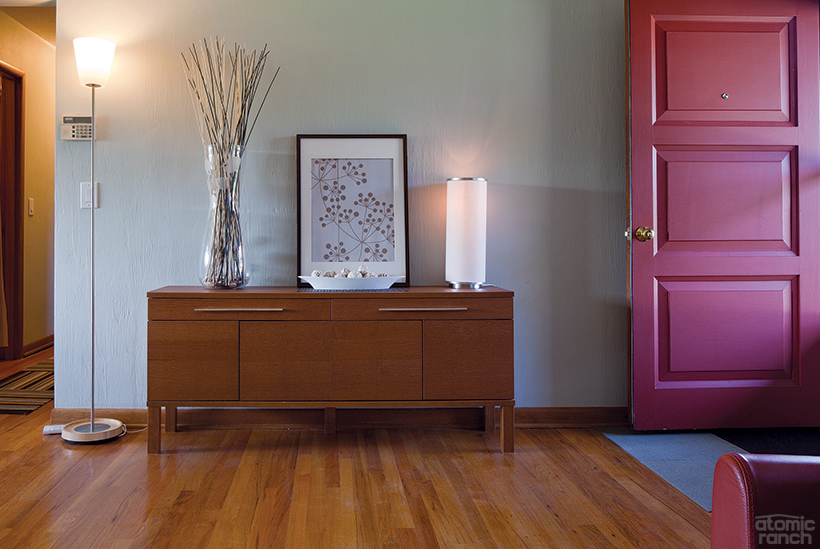
Gallant and Besore walked on cement board for a couple of months when their Pental Parc floor tile turned out to be on backorder from China. They postponed the rear portion of the kitchen—with its ’70s bender-board wall treatment, white cabinetry hiding the TV and breakfast table—a bit to let their budget recover. Then it was on to smaller projects like selective upgrades in two baths and a full-on entertainment space in the basement.
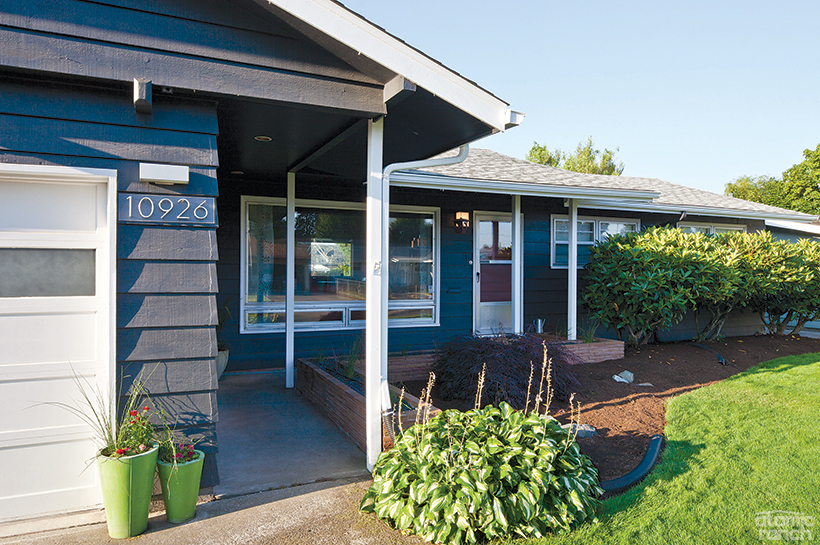
The exterior was painted a dark charcoal, Besore and his dad built a new patio, and furnishings and decorative touches came together thanks to Gallant’s merchandise staging skills. Some are frugal—fabric wrapped on canvas stretchers instead of original art, accessories from discount bins—and some meticulous— having a sputnik fixture plated in satin nickel, tracking down the exact match for the roof shingles from the seller.
Still a work in progress with a list of maybe-next-year projects, their home is a reflection of who they are in 2013. “It’s a great entertaining house. I’ve now become the holiday hostess—my mom has handed it over to me,” Gallant says. “All of the kids can hang out downstairs with their media games, and my mom and sisters are upstairs cooking. That’s the whole idea of a ranch.”

